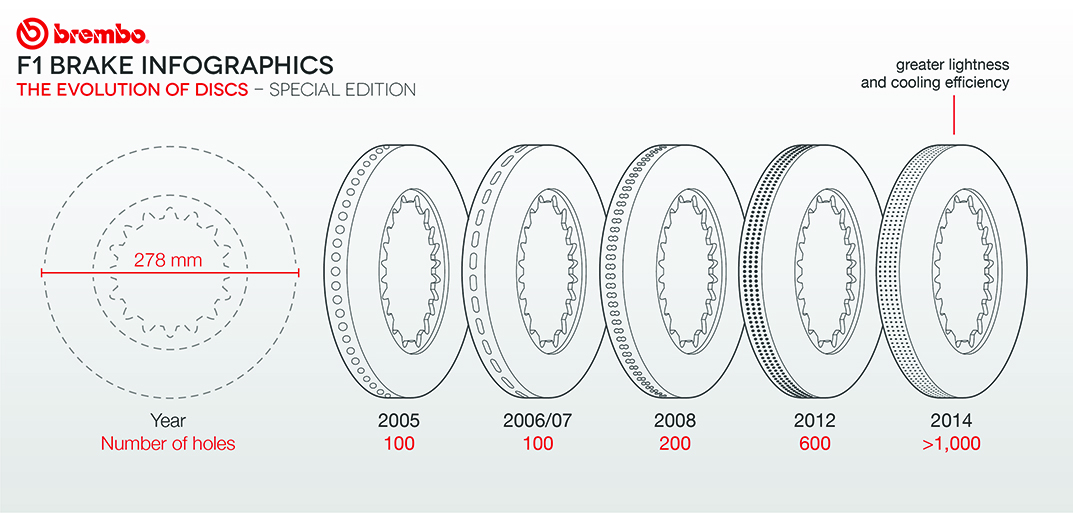2012: Ventilation in the braking systems increases
In 2012, Brembo is supplier to the two teams that fight for the title all the way to the final race. In the end, Vettel's Red Bull takes the lead over Alonso's Ferrari.
FIA is back to modifying the rules, banishing blown diffusers and as a consequence, reducing the aerodynamic load on the rear.
The tyres change, they are squarer now and are made of a constant grade compound. Lastly, the maximum height of the nose is lowered from 62.5 to 55 cm. The various stylistic and design differences in the single-seaters drive Brembo to further customise the braking systems (in terms of both the rigidity and the air flow control inside the wheel), which are developed continuously throughout the course of the season. The ventilation holes in the discs, on the other hand, are multiplied, going from 200 to 600 in one year.
This is possible because the design of the ventilation holes is pushed to the extreme, increasing the utmost number and reducing the diameter, exponentially increasing the carbon surface exposed to the air flow and thus the thermal wear.
In 2012, the single-seaters with Brembo brakes win 11 out of 20 seasonal GPs.

